Maurice Alfred GIBLETT 1
- Born: 15 July 1894, Englefield Green, Surrey, England
- Christened: 2 September 1894, St. Andrew Hillingdon, Middlesex, England
- Marriage (1): Violet LINDSAY on 6 July 1920 in Eton, Buckinghamshire, England 1
- Died: 5 October 1930, Allonne near Beauvais, Oise, Picardie, France at age 36
- Buried: 11 October 1930, Cardington, Bedfordshire, England
 Cause of his death was the R101 Airship disaster. Cause of his death was the R101 Airship disaster.

 Death Notes Death Notes
Killed on board the Airship R101 on its maiden flight to Karachi, when due to fiercely gusting wind and continuous low-level turbulence, the Airship crashed at Allonne near Beauvais, France.
 Burial Notes Burial Notes
Cardington St Mary Churchyard

 Recorded Events in His Life Recorded Events in His Life
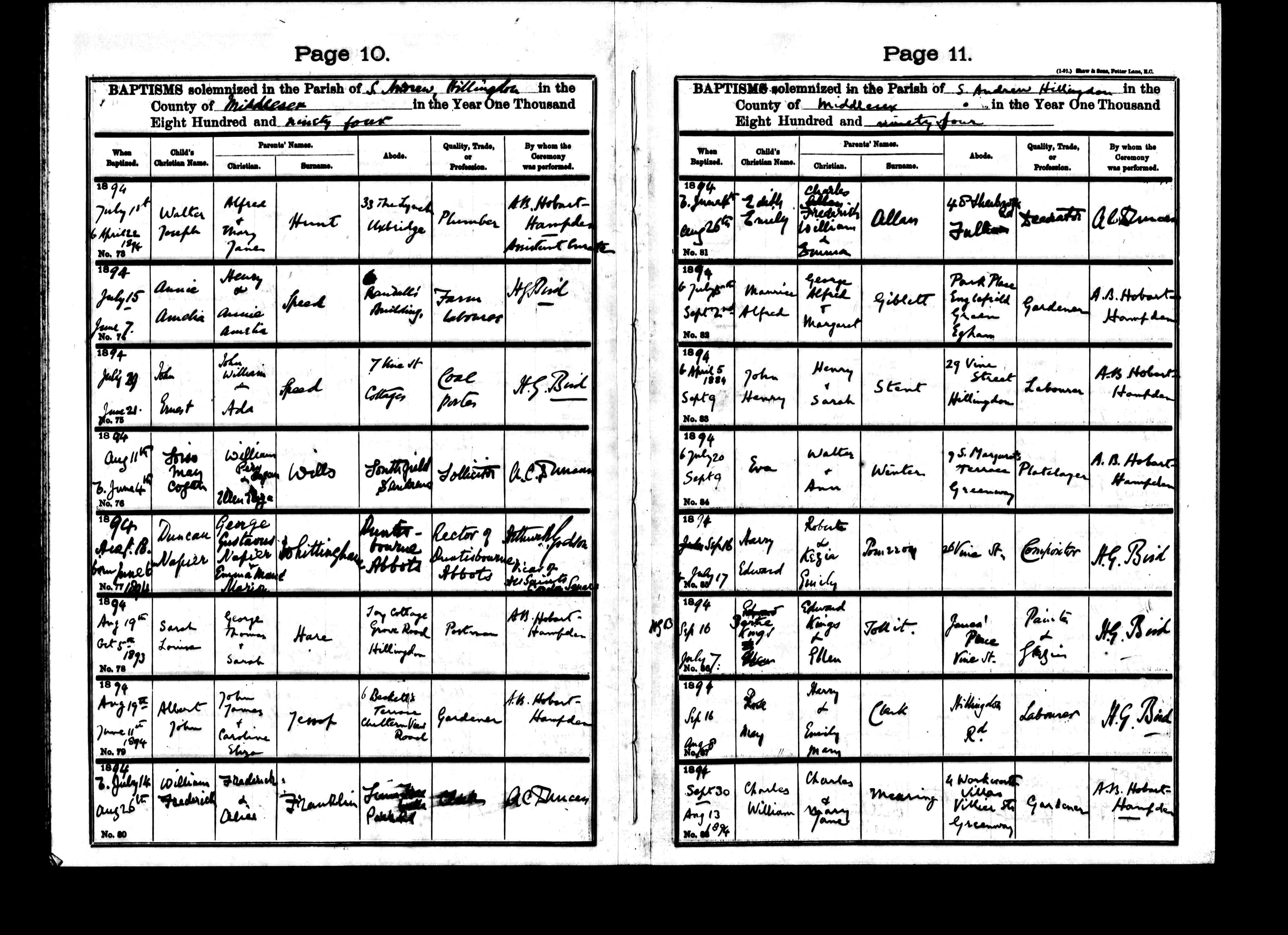
- Gallery: Baptismal Register, on 2 September 1894, in St. Andrew Hillingdon, Middlesex, England.
_6Oct1930.jpg)
- His obituary was published in The Times on 6 October 1930 in London, England.
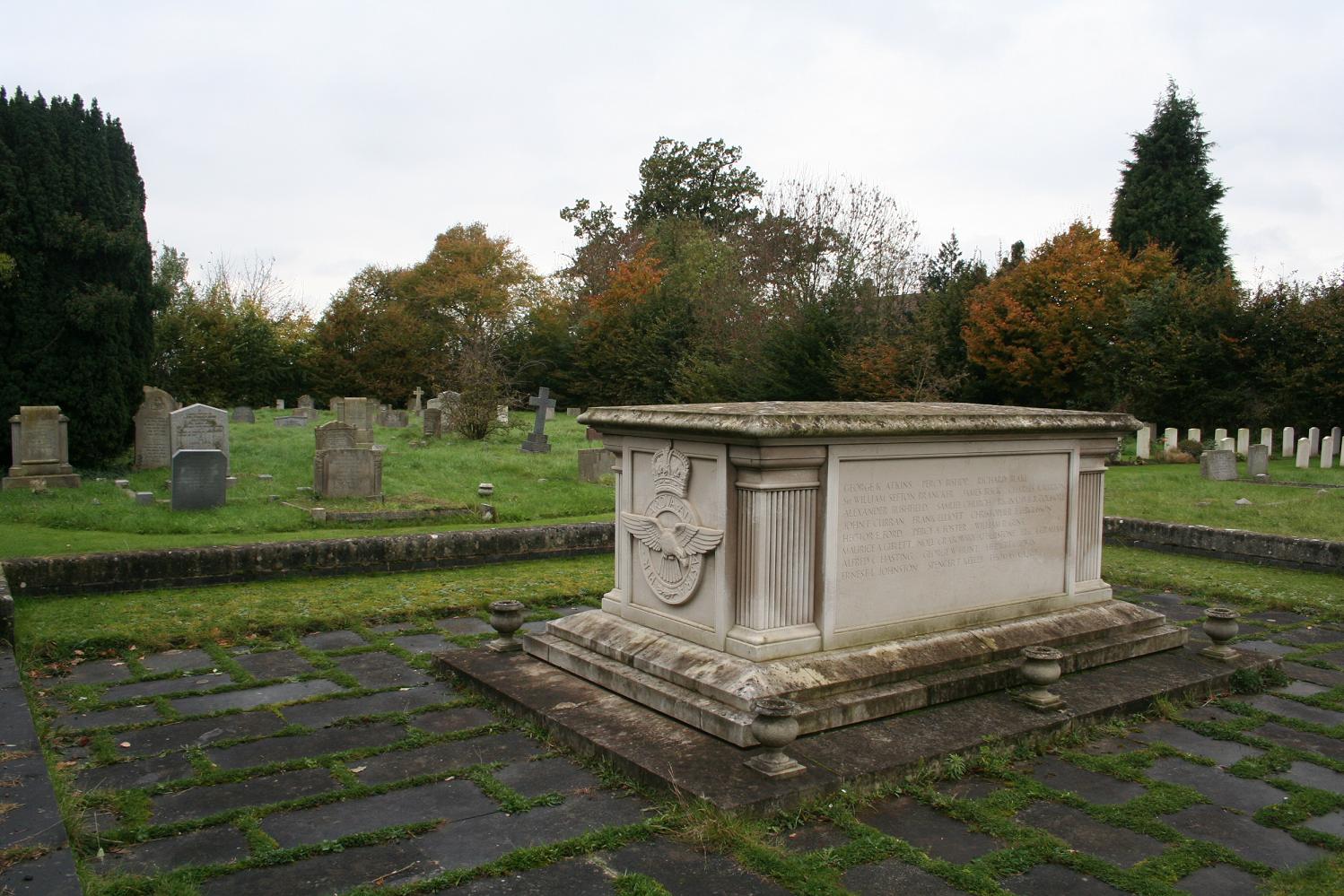
- His funeral was held on 11 October 1930 in Cardington, Bedfordshire, England.
The R101 Airship, Crash, Victims Funeral, and Memorial
H.M. Airship R101 was one of a pair of British hydrogen-filled rigid airships completed in 1929 as part of a British government program to develop civil airships able to serve on long-distance routes within the British Empire. It was designed and built by an Air Ministry-appointed team and was effectively in competition with the government-funded but privately designed and built R100. When built, the R101 was the world’s largest flying craft at 731 ft (223 m) in length, although its length was surpassed by airships built a few years later.
After some trial flights, and subsequent modifications to increase lifting capacity which included lengthening the airship by 46 ft (14 m), the R101 departed on the evening of 4 October 1930 for its maiden overseas voyage with an intended destination of Karachi. Unfortunately, this maiden voyage also turned out to be its final flight: due to fiercely gusting wind and continuous low-level turbulence, the R101 crashed just south of Beauvais, France a little after 2 in the morning on Sunday, the 5th of October, 1930. Forty-eight of the 54 people on board were killed as a result of the intense fire. Many of bodies were so badly charred as to be unrecognizable, although eventually 26 were identified. Among the deceased were Lord Thomson, the Air Minister who had initiated the program, senior government officials, and almost all the dirigible’s designers from the Royal Airship Works. The crash of R101 effectively ended British airship development, and was one of the worst airship accidents of the 1930s. The loss of life was more than the 35 killed in the highly publicized Hindenburg disaster of 1937, though fewer than the 52 killed in the French military Dixmude in 1923, and the 73 killed when the USS Akron broke up over sea in 1933.
There were 54 men on board the final flight of the R101 — 37 crew, 5 Officers of the R101, 6 Officials of the Royal Airship Works, and 6 passengers. There were only 6 survivors of the crash; the remaining 48 men who were killed were all buried in Saint Mary Churchyard in Cardington, Bedfordshire, England (Cardington was the home of the Royal Airship Works). Bedfordshire and Luton Archives and Records Service has a large number of albums of press cuttings relating to the tragedy and their website gives details of the funeral and the erection of the memorial in the churchyard.
The ceremonies began at Beauvais on 7th October when a contingent from the French army and air force assembled at the Hotel de Ville for a “levee du corps.” The French prime minister and Ministers of Air and War were also present. A movement was already under way in Beauvais to buy the ground on which R101 crashed for a permanent memorial, which was indeed later built.
The bodies were then taken by French gun carriages to a special train which took the dead to Boulogne. From there the bodies were carried back to Dover by destroyers H.M.S. Tempest and H.M.S. Tribune. A special train then carried the remains to London accompanied by members of the Royal Air Force. The bodies were then temporarily housed at Westminster City Mortuary in Horseferry Road.
The bodies lay in state in Westminster Hall before being transferred to Euston Station via Whitehall, Strand, Aldwych, Kingsway and Southampton Row for removal to Bedford. The train passed along the branch line from Bletchley to Bedford after leaving the West Coast Main Line. The bodies were unloaded at Saint John’s Station about 2 p.m., going by road in a mile long cortege to Saint Mary’s churchyard in Cardington. They were buried at 4 p.m. on 11th October 1930 in separate coffins but in a mass grave because so many of the remains were unidentified. The service was undertaken by the Vicar of Cardington and the Bishop of Saint Albans. A squadron of RAF aircraft flew overhead and three volleys were fired over the grave by a detachment of the Bedfordshire and Hertfordshire Regiment. A memorial service had been held at Saint Paul’s cathedral in London earlier that morning.
The monument above the mass grave was erected by public subscription, which realised £1,398/1/3. It was completed in September 1931 at a cost of £1,075/5/6, the remaining £322/15/9 being available for dependents of those who died.
The memorial was designed by Sir Albert Richardson. It is a large stone tomb chest of simple design set on a three tiered base. The north west panel is inscribed: “Here lie the bodies of 48 officers and men who perished in the airship R101 at Beauvais, France, Oct. 5 1930.” The side panels are inscribed with the names of the dead. The monument was listed by the former Department of Environment in May 1984 as Grade II, of special interest.
A plaque to the victims of the disaster is in Cardington church. More poignantly the ensign flown from R101 when it crashed is framed and also hangs in the church.
— Story adapted 19 May 2015 by KMH from Wikipedia, as well as from the funeral story on the Bedfordshire government website. Full credit to the latter, as the text was only modified slightly.

- He was buried at the St Mary’s Churchyard in Cardington, Bedfordshire, England.
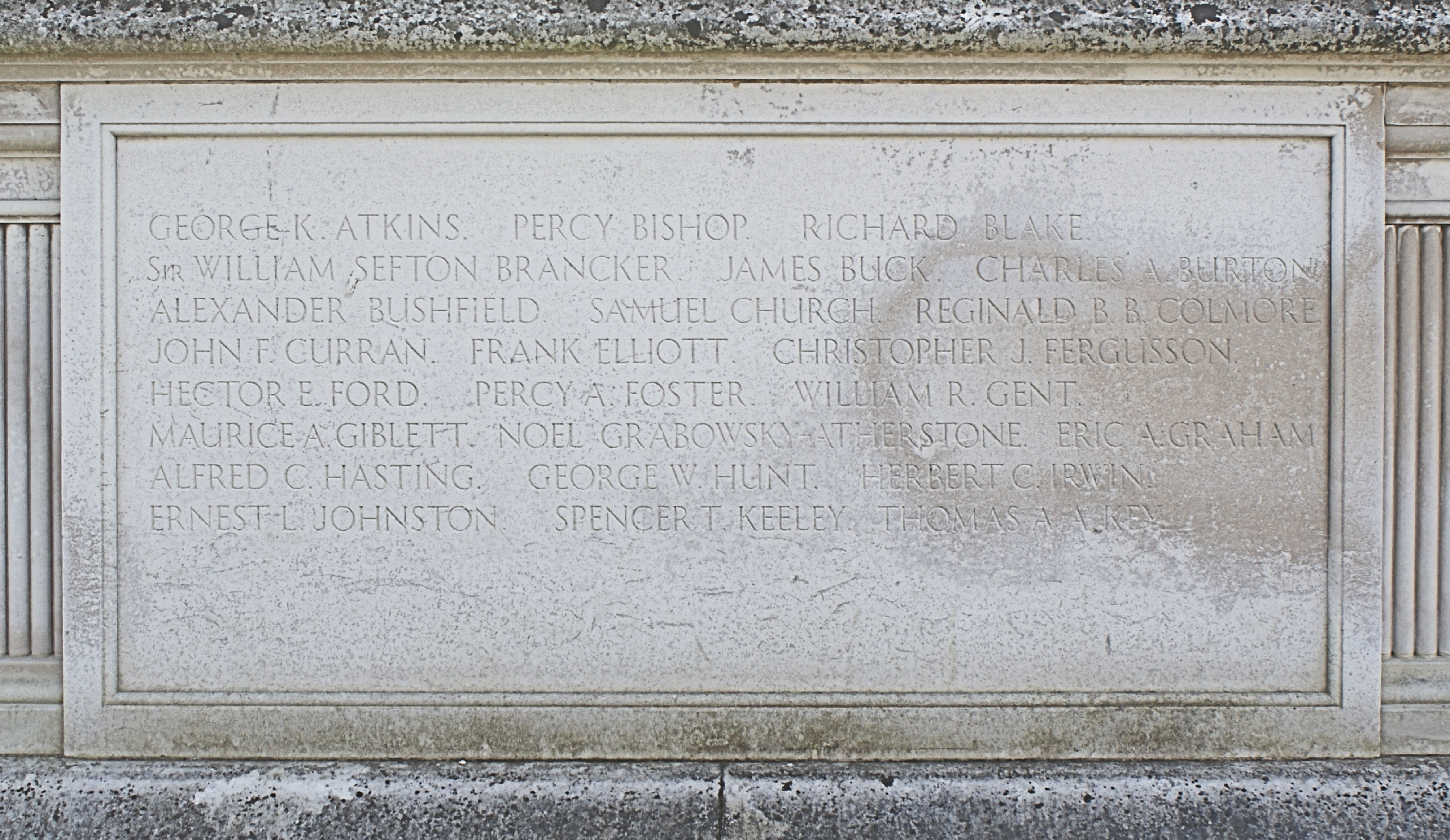
- Gallery: Additional photo of the gravestone monument at St Mary’s Churchyard, in Cardington, Bedfordshire, England.
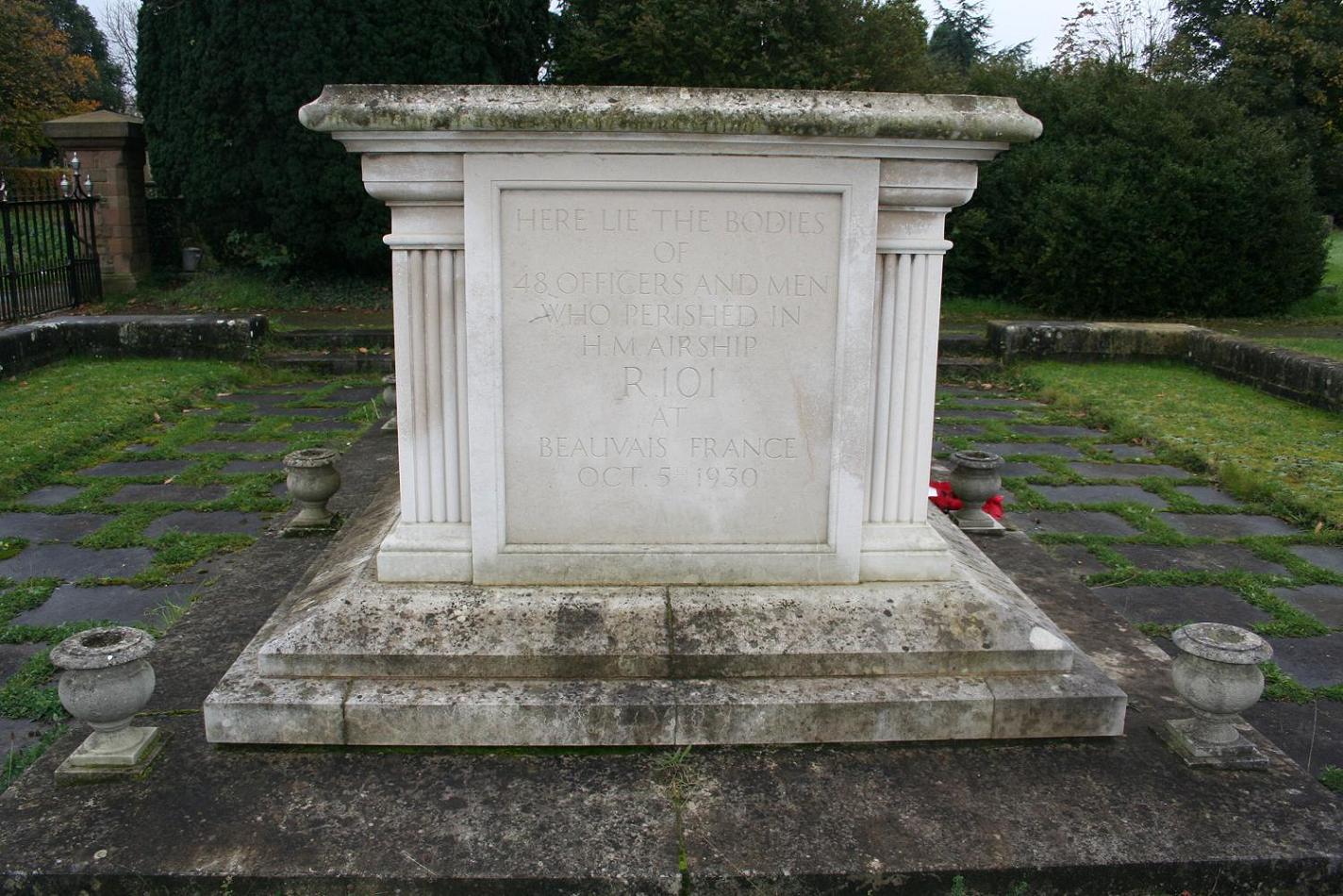
- Gallery: Additional photo of the gravestone monument at St Mary’s Churchyard, in Cardington, Bedfordshire, England.
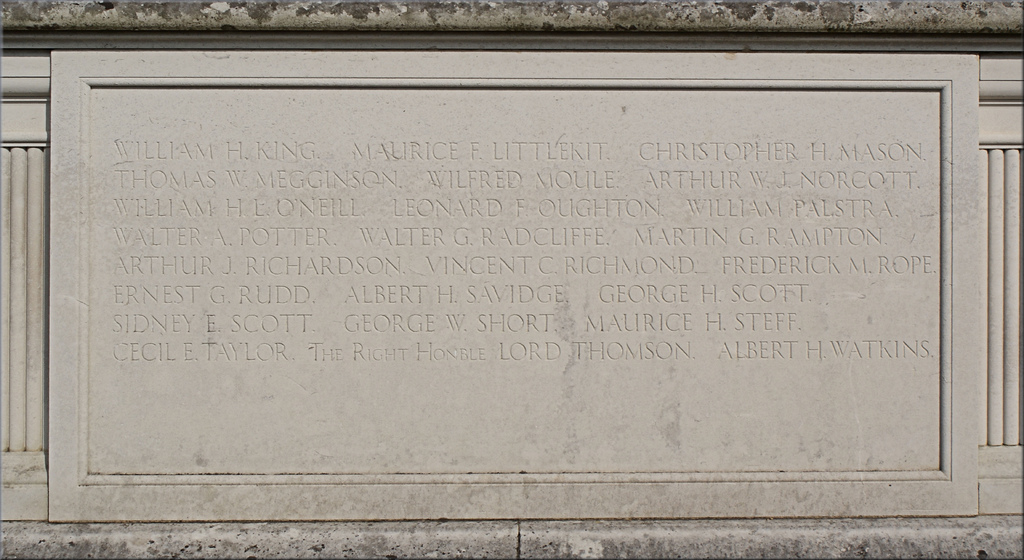
- Gallery: Additional photo of the gravestone monument at St Mary’s Churchyard, in Cardington, Bedfordshire, England.
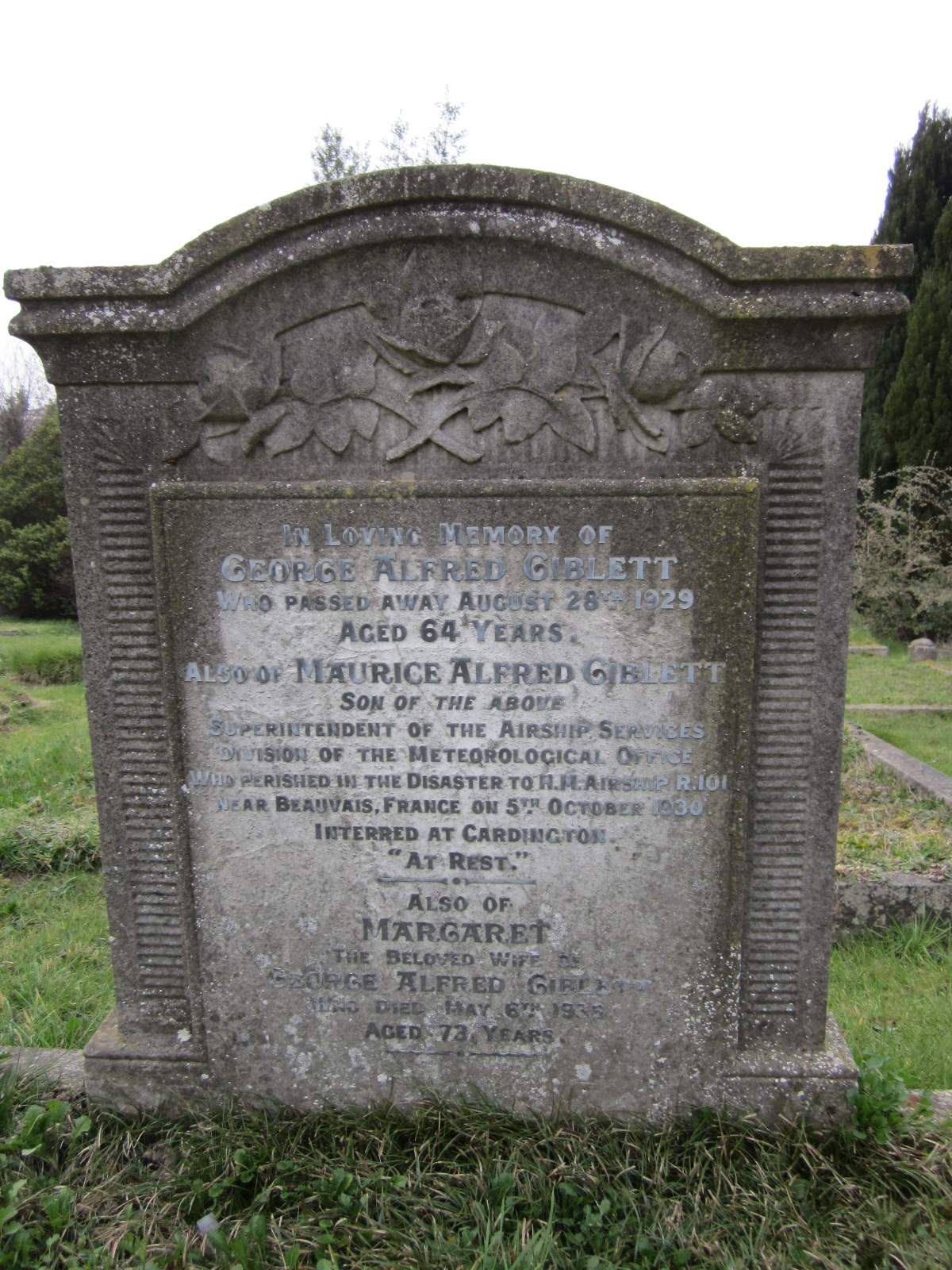
- Cenotaph: A memorial exists for Maurice in Beaconsfield Shepherds Lane Cemetery in Beaconsfield, Buckhinghamshire, England, although he is buried elsewhere.
Monumental Inscription in Beaconsfield Shepherds Lane Cemetery:
IN LOVING MEMORY OF
GEORGE ALFRED GIBLETT
WHO PASSED AWAY AUGUST 28th 1929
AGED 64 YEARS.
ALSO OF MAURICE ALFRED GIBLETT
SON OF THE ABOVE
SUPERINTENDENT OF THE AIRSHIP SERVICES
DIVISION OF THE METEOROLOGICAL OFFICE
WHO PERISHED IN THE DISASTER TO H.M. AIRSHIP R.101
NEAR BEAUVAIS, FRANCE ON 5th OCTOBER 1930
INTERRED AT CARDINGTON.
“AT REST.”
ALSO OF
MARGARET
THE BELOVED WIFE OF
GEORGE ALFRED GIBLETT
WHO DIED MAY 6th 1936
AGED 73 YEARS.
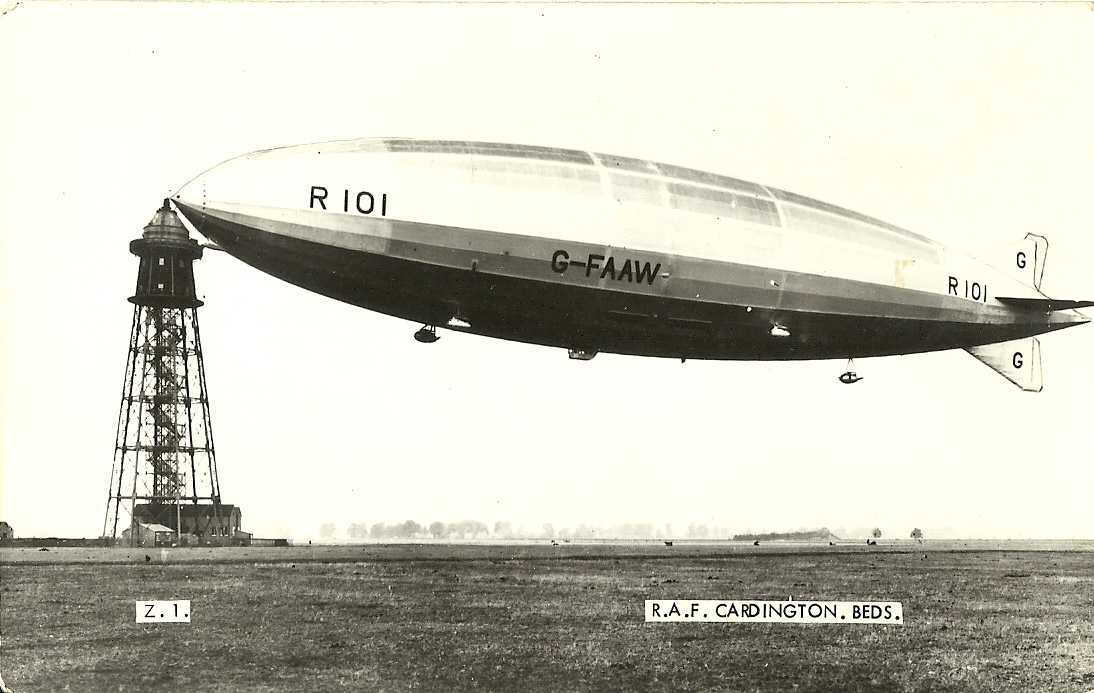
- Gallery: The H.M. Airship R101, moored at its docking tower, in Cardington, Bedfordshire, England.

- Gallery: The R101 in flight over london, in London, England.
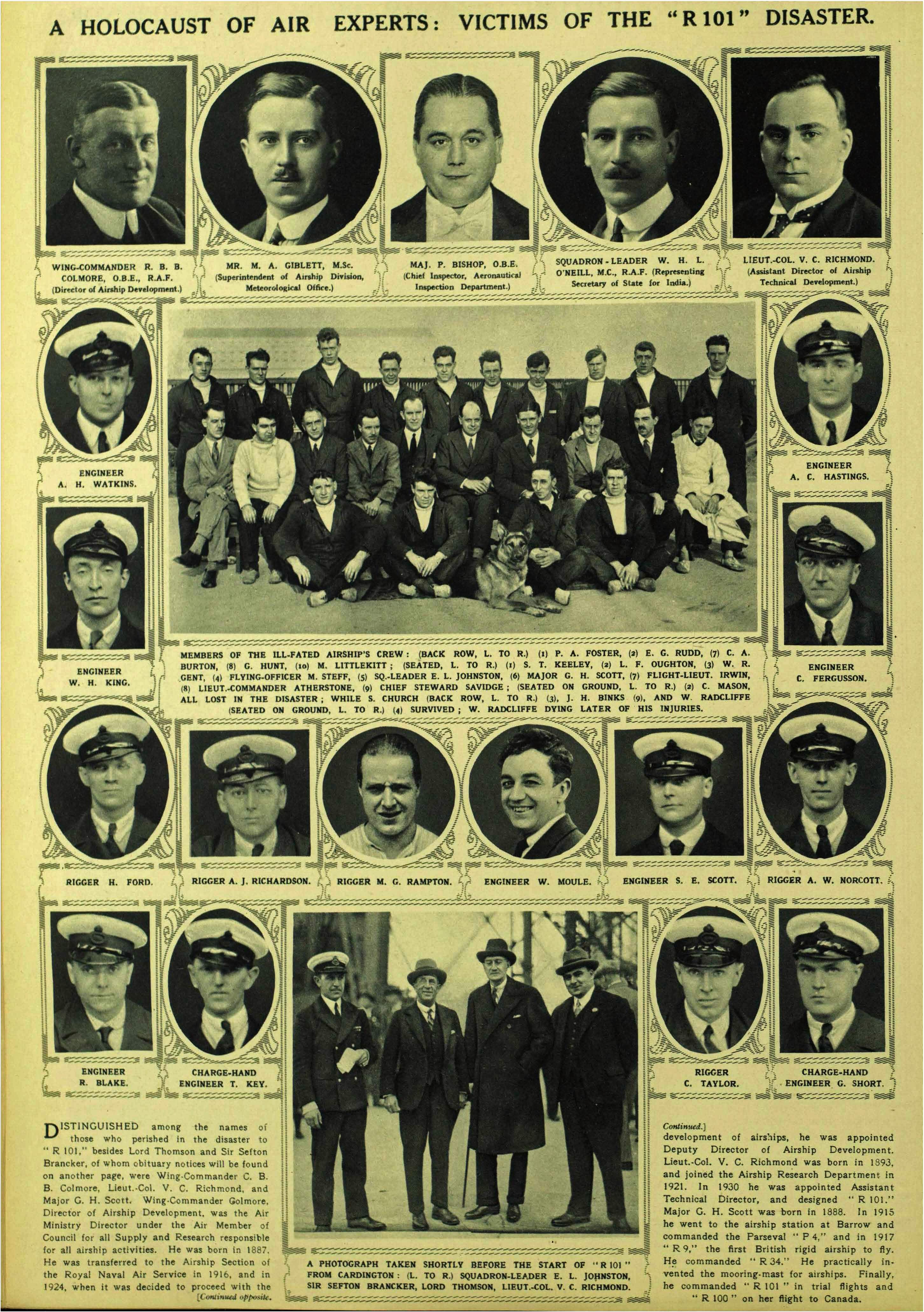
- A Holocaust of Air Experts: Victims of the “R101” Disaster in Allonne near Beauvais, Oise, Picardie, France.

- Gallery: Wreckage of the R101 Airship (R101-8) in Allonne near Beauvais, Oise, Picardie, France.
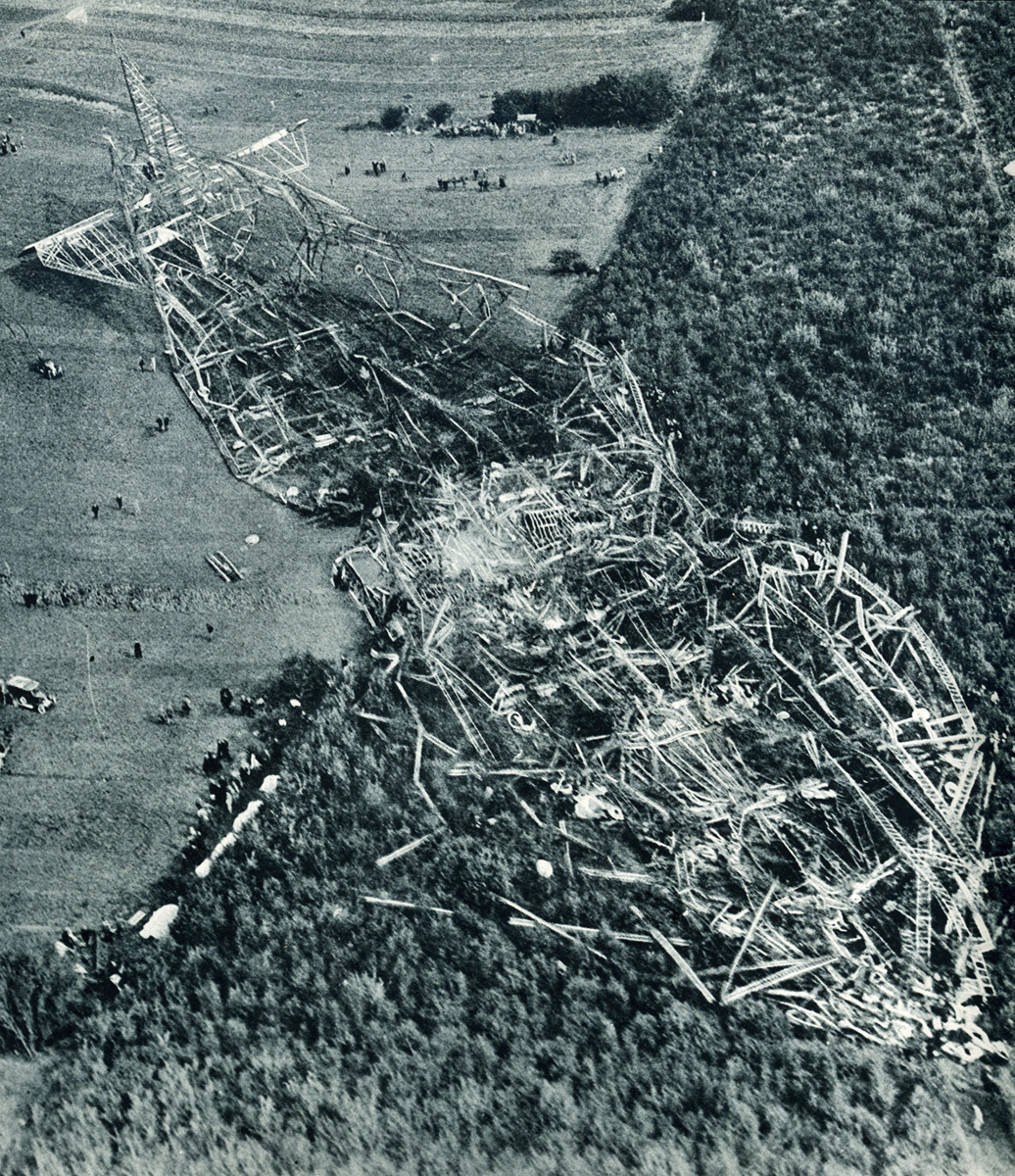
- Gallery: Wreckage of the R101 Airship (R101-2) in Allonne near Beauvais, Oise, Picardie, France.
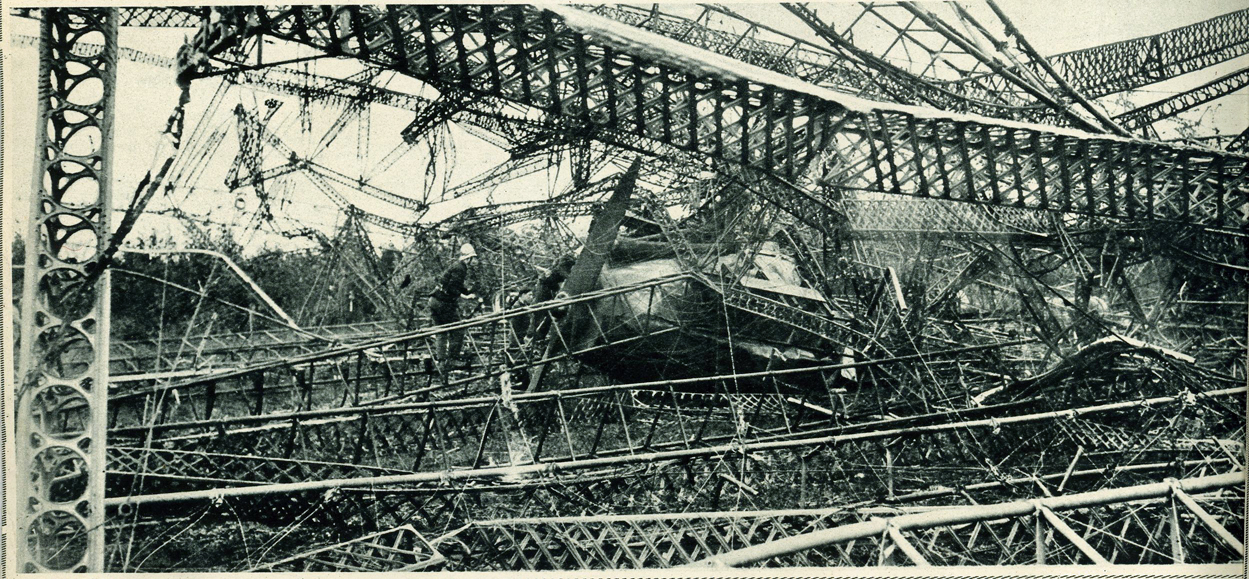
- Gallery: Wreckage of the R101 Airship (R101-6) in Allonne near Beauvais, Oise, Picardie, France.
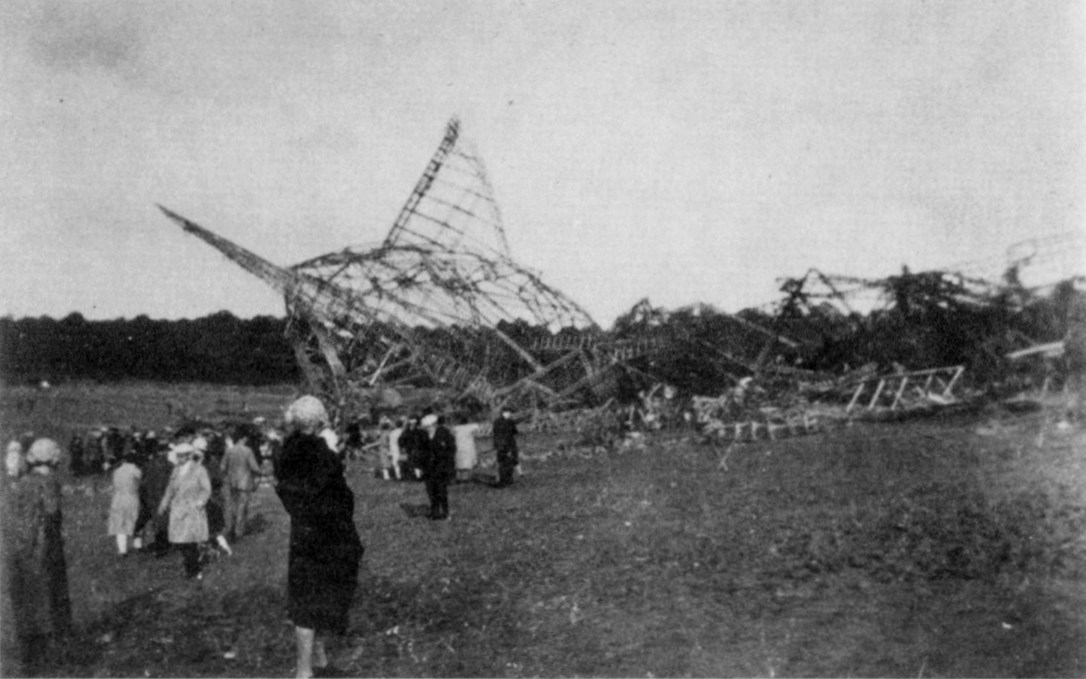
- Gallery: R101 Airship wreckage in Allonne near Beauvais, Oise, Picardie, France.
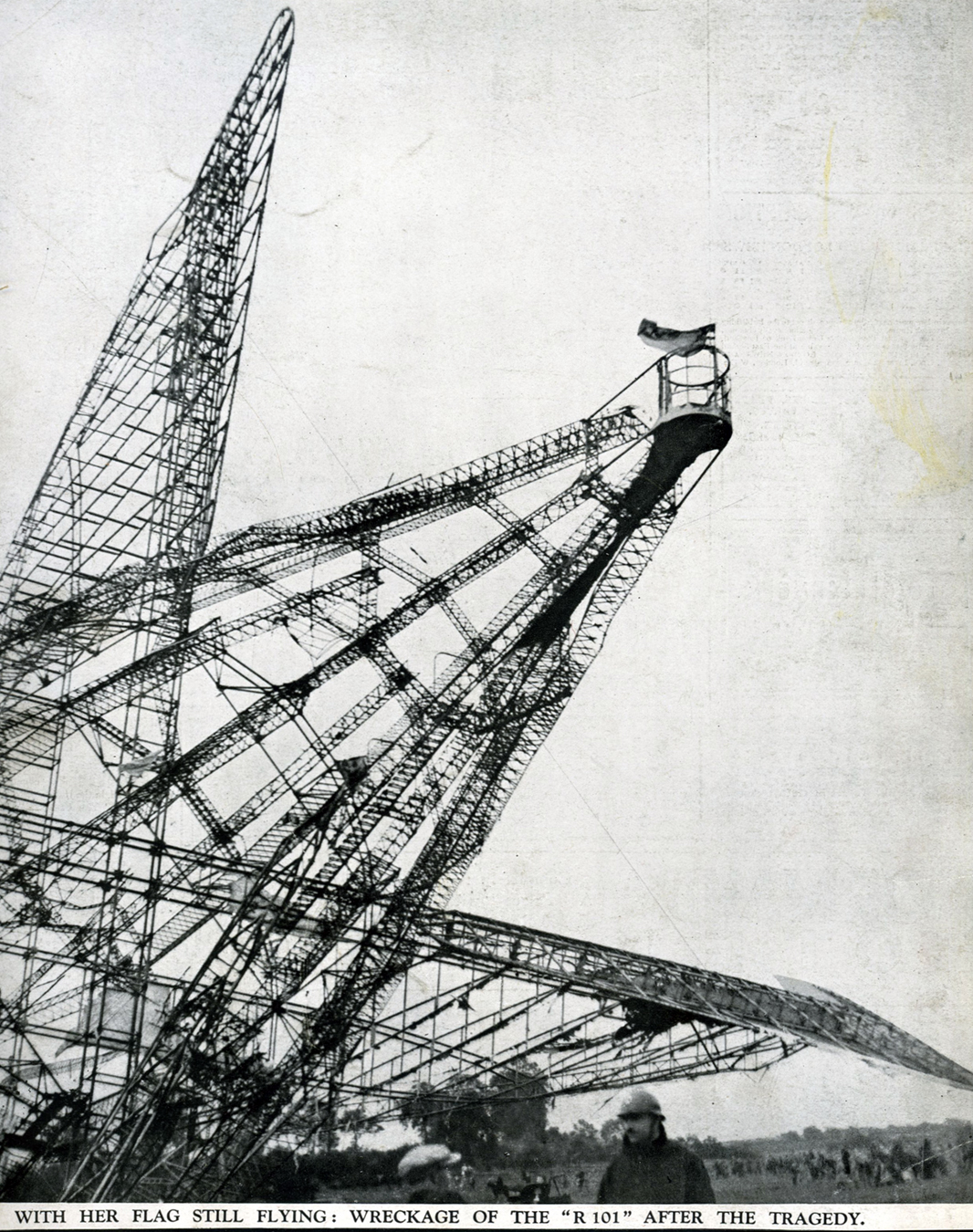
- Gallery: Flag still flies over the wreckage of the R101 Airship (R101-3) in Allonne near Beauvais, Oise, Picardie, France.

- Essay: About the R101 Airship Crash... “The R-101, larger than any other airship in the world, was built at Cardington, near Bedford, in 1930. Seven hours into her maiden voyage to India in increasingly threatening weather, she crashed into a hillside at Beauvais in France. Of the 54 people on board, all but eight died instantly. A report of the inquiry into the disaster and the tragic loss of life which exposed that pressure from the Air Minister, Lord Thomson had, at the last minute, unduly hurried designers, constructors and crew. I am told that the ship had been overloaded with all the paraphernalia required for a celebratory dinner at Cairo and extra fuel so that the meal would not be disturbed by re-fuelling that had originally been scheduled to take place there. The overweight ship had struggled to clear houses shortly after take-off.”
— from a story originally shared by physica12 to Freeman_family_tree on 08 Aug 2008.
* * * * * * *
“The R.101 was scheduled to take off on a flight to India on 4 October 1930 and, against the better judgement of some, actually left that day in deteriorating weather. Soon afterwards, at nine minutes past two on the morning of 5 October, it crashed near Beauvais in France. A former member of the Airship Division at Cardington told me that he was speaking to the Superintendent, Maurice Giblett, on the evening before they took off and Giblett was most apprehensive about the decision to leave at that time. He was obviously justified; and he was among those who lost their lives. The ill-fated flight of the R.101 was one of the worst-ever cases of that curse of some aviators known as ‘press-on-itis’.”
— Snippet from a history report published by The Royal Meteorological Society on their website (http://www.rmets.org/sites/default/files/hist04.pdf)
* * * * * * *
R101 Airship Disaster
On 5 October 1930 the British built airship “R101” crashed into a hillside near Beauvais in France killing everybody on board. The following were listed as having been killed:
ATHERSTONE N G, Lieut Cdr.
ATKINS G K
BISHOP P, Major
BRANCKER Sir Sefton, Air Vice Marshall RAF
BUCK J, Lord Thomson’s attendant
BUSHFIELD A
CHURCH S
COLMORE R B B, Wing Commander RAF
ELLIOTT F, Wireless Operator
FERGUSSON C J
FORD H E
FOSTER P A
GENT W R, First Engineer
GIBLETT M A, Mr
GRAHAM E A, Cook
HASTINGS A C
HODNETT F
HUNT G W, Chief Coxswain
IRWIN H C H, Flight Lieut RAF
JOHNSTON E L, Sqdn Leader RAF
KEELEY S T
KEY T A
KING W H
LITTLEKIT M F
MASON C H
MEGGINSON J W, Galley Boy
MOULE W
NORCOTT A W J
O’NEILL W H L, Sqdn Leader
OUGHTON L F
PALSTRA W, Sqdn Leader RAAF
POTTER W ARADCLIFFE W G
RAMPTON M G
RICHARDSON A J
RICHMOND V C, Lt Colonel
ROPE F M, Sqdn Leader
RUDD E G
SAVIDGE A H
SCOTT G H, Major
SCOTT S E
SHORT G W
STEFF M H, Flying Officer
TAYLOR C E
THOMSON, Lord (Air Minister)
WATKINS A H
Documents on the R101 are held in the Public Record Office in Kew under AIR 3, 5 and 11. Photographs of the wreckage are under AIR5/1070 via 6/573/1/.
— ibba02 originally shared this story to Elliott Family Tree on 16 Aug 2009
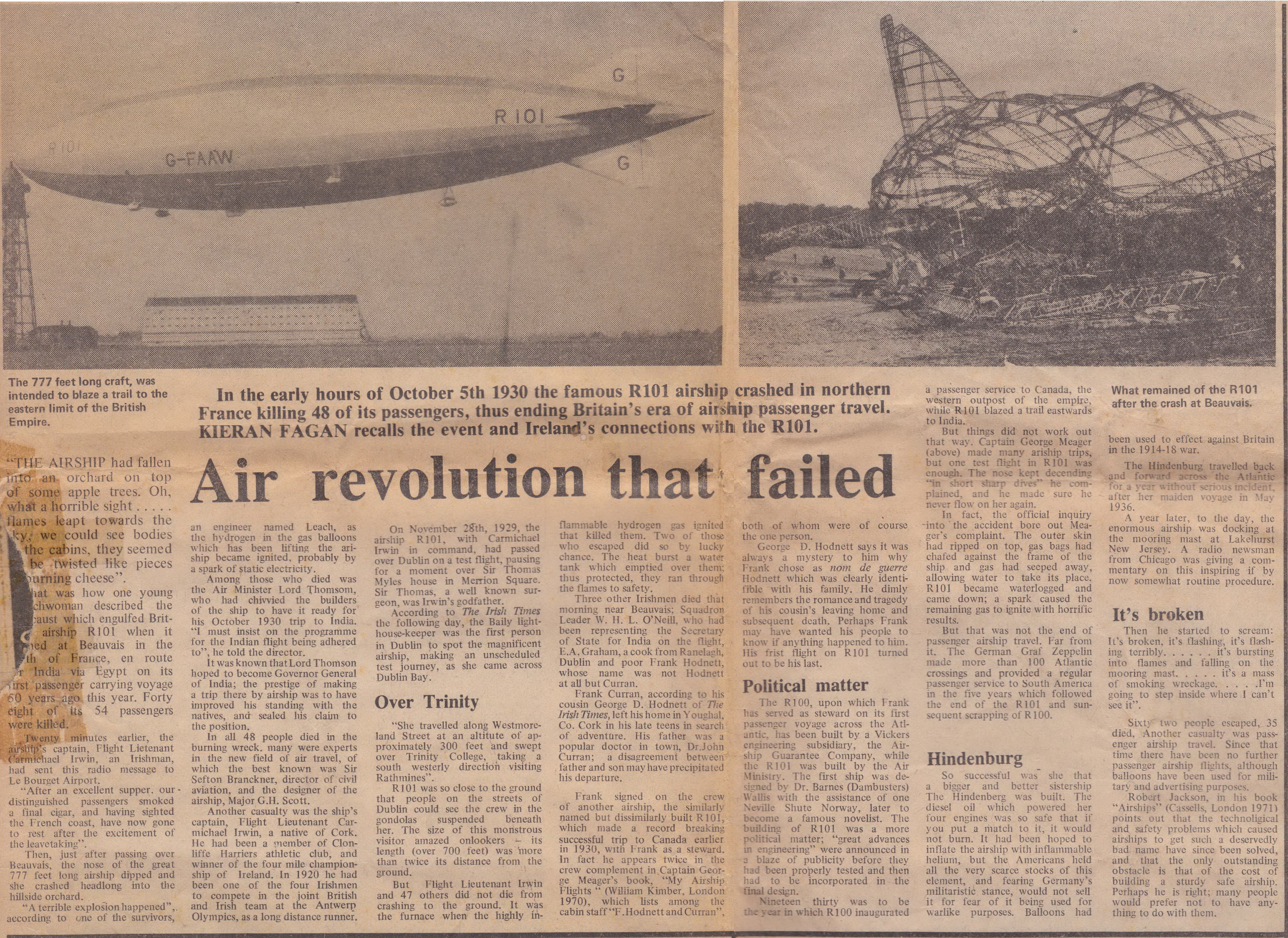
- Gallery: Retrospective article on the R101 Tragedy from the Irish Times, in 1980, in Ireland.
|
 Hainings, Harrowers, Powells, Richmonds, and Related Families
Hainings, Harrowers, Powells, Richmonds, and Related Families 

_6Oct1930.jpg)















 Sources
Sources 
 Have a comment or a correction? Sign my guestbook!
Have a comment or a correction? Sign my guestbook! 